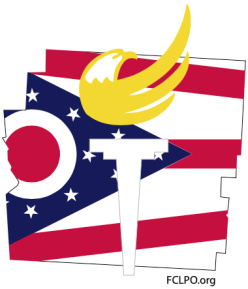Whenever there is a tragedy like school shootings and public gatherings being sprayed with bullets, we see two reactions. First, we see the inevitable cries by “gun control” groups pushing for more ways to control (or outright ban) firearms. Then, we see the inevitable backlash by “gun rights” groups pushing for a strict defense of the Constitution. Like most of our political system, we are stuck in the strange land of being presented only binary choices – “gun control” or “no gun control”. But, what does the Second Amendment mean and why do we have it?
A few housekeeping items. In the late 1700s, “militia” had the same common meaning as today – a non-professional fighting force comprised of citizens of a political territory. The term “regulate” has several definitions but the most useful from the 18th century is “to bring into conformity by training to principles and rules.”
Using this housekeeping, the Second Amendment states: “A well (trained fighting force of non-professional citizen soldiers) being necessary to the security of a free State, the right of the people to keep and bear Arms, shall not be infringed.”
Unlike the rest of the amendments within the Bill of Rights, the Second Amendment comes with a clause providing an explanation for it’s inclusion. This is unique to the Second Amendment not found in the rest of the Bill of Rights, which are provided directly and with assumed obvious need of it.
Born from Revolution, the Founders believed that the right of the people to keep and bear arms was fundamental to security from tyranny both foreign and domestic. Remember, the revolution was to throw off the tyranny of their own country and separate from it. An armed citizenry provides a great deterrent to would-be despots and invaders. If the deterrence fails, then we have the Arms to repel the aggressor. And they lived, much as we do now, in a world with aggressive regimes globally. This is also why the word used is Arms – not rifle, not musket, not firearms. All these terms were available in popular speech of the period which enhances the use of the broader term meant for instruments of war and personal protection – Arms.
The founders were tremendously fearful of standing armies and State control of Arms. The Founders embraced the Enlightenment ideal that standing armies are dangerous for many reasons including the high propensity to use it against others. Today, we have limited civilian ownership of Arms while we support a broad military with bases in over 70 countries and soldiers in over 150.
The philosophy of liberty does not come naturally to political leaders. Unfortunately, the use of control through power is nearly universal in government. An armed populace which knows how to use Arms makes those in power think twice about the cost to control citizens through aggression.
In the text, we see the Second Amendment protects a person’s right to keep and bear Arms will not be infringed, subject to being “well-regulated”. I don’t see a libertarian issue with the need to demonstrate training in the use of firearms. The demonstration of those skills needs to be to the citizenry itself and not through State sanctioning. Those lacking the mental temperament to control themselves lack the ability to demonstrate that they can be well-regulated. And lack of this ability to regulate oneself diminishes the ability of the rest to protect liberty through the deterrence effect preserved by the Second Amendment.
